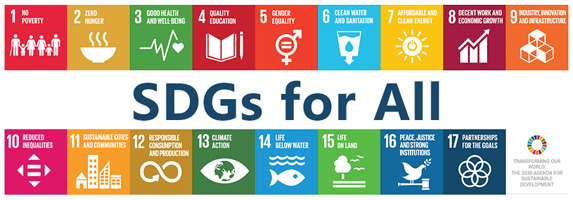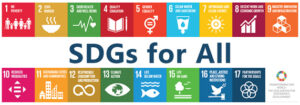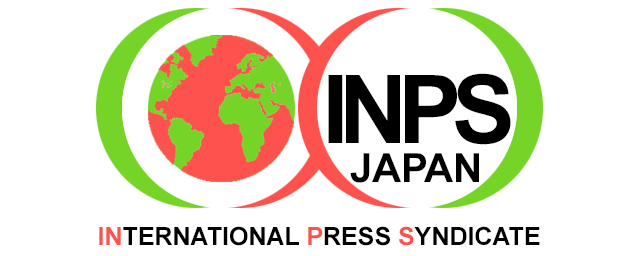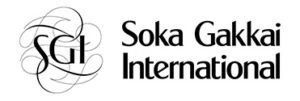Analysis by Jaya Ramachandran
PARIS | NEW YORK (IDN) – Revitalizing the global partnership is Goal 17 of the 2030 Agenda for Sustainable Development – adopted by world leaders in September 2015 at an historic Summit at the UN headquarters in New York.
It urges developed countries to implement fully their official development assistance (ODA) commitments, including the commitment to achieve the target of 0.7 per cent of the Gross National Income (GNI) given as ODA to developing countries and 0.15 to 0.20 per cent to least developed countries.
“ODA providers are encouraged to consider setting a target to provide at least 0.20 per cent of ODA/GNI to least developed countries,” says one of the Goal 17 targets endorsed by the world leaders. JAPANESE | PORTUGUESE | SPANISH
The Agenda came into force on January 1, 2016. But the 2015 figures released by the Development Assistance Committee (DAC) of the 34-nation Organisation for Economic Co-operation and Development (OECD) indicate that it would be an uphill task to reach an important target of Goal 17 in the next 15 years.
Measured in real terms – correcting for inflation and for a sharp depreciation in many DAC country currencies against the dollar – ODA was up 83% since 2000, when the Millennium Development Goals were agreed.
But in 2015, only six of the 28 DAC countries – Denmark, Luxembourg, The Netherlands, Norway, Sweden and the United Kingdom – met a United Nations target to keep ODA at or above 0.7% of GNI. Net ODA as per cent of GNI was 0.30% in 2015, on par with 2014.
According to official data collected by the OECD Development Assistance Committee (DAC), ODA rose in 22 countries in 2015, with the biggest increases in Greece, Sweden and Germany. Six countries reported lower ODA, with the steepest declines in Portugal and Australia.
Of the several non-DAC members who report their aid flows to the OECD body, the United Arab Emirates posted the highest ODA/GNI ratio in 2015 at 1.09%.
ODA totalled USD 131.6 billion in 2015, signifying a rise of 6.9% from 2014 in real terms as aid spent on refugees in host countries more than doubled in real terms to USD 12 billion. Stripping out funds spent on refugees, aid was up 1.7% in real terms.
Funds spent on hosting or processing refugees in donor countries accounted for 9.1% of ODA in 2015, up from 4.8% in 2014, when in-donor refugee costs totalled USD 6.6 billion. The rise in refugee costs did not significantly eat into development programmes, with around half of donor countries using money from outside their aid budgets to cover refugee costs, according to DAC findings.
“Countries have had to find large sums to cover the costs of an historic refugee crisis in Europe, and most have so far avoided diverting money from development programmes. These efforts must continue. We also welcome that more aid is being provided to the poorest countries,” said OECD Secretary-General Angel Gurría.
“Governments must ensure that development aid keeps rising. They also need to develop long-term options for meeting future refugee costs and the integration of refugees in our societies, while ensuring at the same time that ODA reaches those countries and people that need it the most,” Gurria added.
An unprecedented 1.5 million refugees claimed asylum in OECD countries in 2015, more than a million in Europe. DAC rules allow member countries to count certain refugee-related expenses as ODA for the first year after their arrival.
Three countries – Australia, Korea and Luxembourg – do not count refugee costs as ODA. Others – Austria, Greece, Italy, the Netherlands and Sweden – saw refugee costs account for more than 20% of their ODA in 2015.
The 2015 data show that bilateral aid to the poorest countries rose by 4% in real terms, in line with commitments by DAC donors to reverse recent declines. Bilateral aid, making up around two-thirds of ODA, is aid provided by one country to another country. A survey of donor spending plans through 2019 suggests flows to the poorest countries will keep rising.
Humanitarian aid rose by 11% in real terms to USD 13.6 billion in 2015. Net debt relief grants fell by 36% in real terms and represented 0.2% of total net ODA in 2015, compared to about 20% in 2005 and 2006 when debt relief was at its highest level due to exceptional measures for Iraq and Nigeria.
Preliminary estimates show that within net bilateral aid, grants rose by 9% in real terms from 2014, however, excluding grants for in-donor refugee costs, they rose by 0.4%. Non-grant net flows rose by 26% in real terms.
Bilateral aid to the group of least developed countries was USD 25 billion, an increase of 4% in real terms compared to 2014, thus marking a slight rebound in aid after several years of diminishing flows to this group of countries.
Bilateral ODA to sub-Saharan Africa was USD 24 billion, representing an increase of 2% in real terms from 2014; it also rose to the African continent as a whole, by 1% in real terms to USD 27 billion.
Net ODA rose in 22 countries, with the largest increases recorded in Austria, Canada, Czech Republic, Germany, Greece, Iceland, Italy, Japan, Netherlands, Poland, Slovak Republic, Slovenia and Sweden. For some, the large increases were due to in-donor refugee costs. Excluding these costs, net ODA still rose in twenty countries. By contrast, total net ODA fell in six countries, with the largest decreases recorded in Australia and Portugal.
G7 countries – Britain, Canada, France, Germany, Italy, Japan and the U.S. – provided 72% of total net DAC ODA in 2015, and the DAC-EU countries 56%.
ODA makes up more than two thirds of external finance for least-developed countries and the DAC is pushing for it to be used more as a lever to generate private investment and domestic tax revenues in poor countries. The DAC is also looking at clarifying the rules for which refugee costs can be counted as ODA.
“We need to remember that the best way to achieve the Sustainable Development Goals and avoid future refugee crises is to continue the current momentum of aid flows, particularly to the neediest and most fragile countries,” said DAC Chair Erik Solheim.
“I am glad that we have reversed the recent declines in aid to the poorest countries and that most countries aren’t spending large amounts of their ODA on hosting refugees,” Solheim added. [IDN-InDepthNews – 16 April 2016]
IDN is the flagship of International Press Syndicate.
Photo credit: UN




